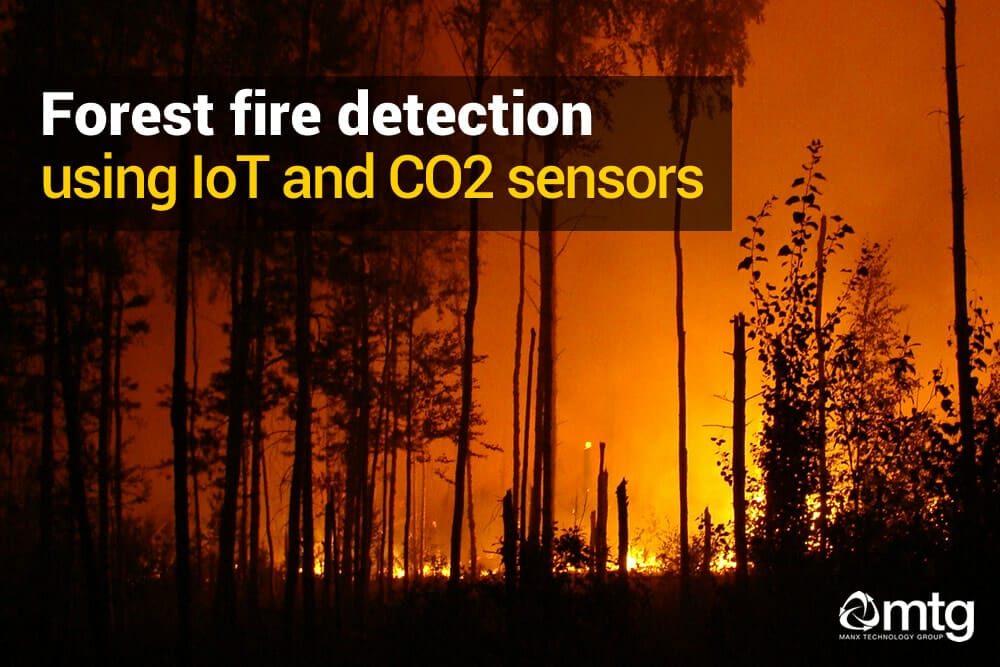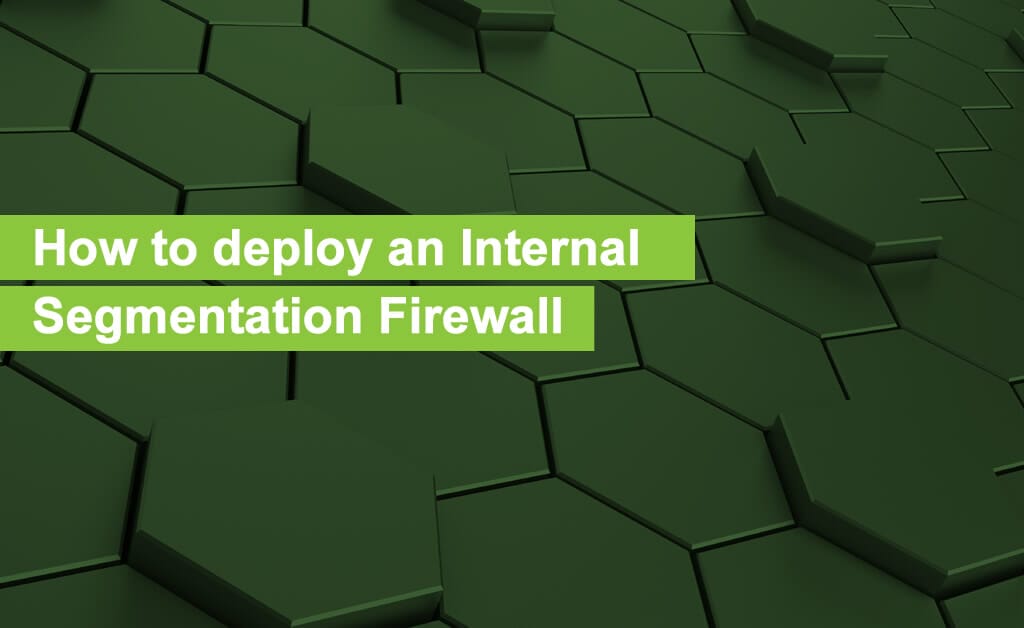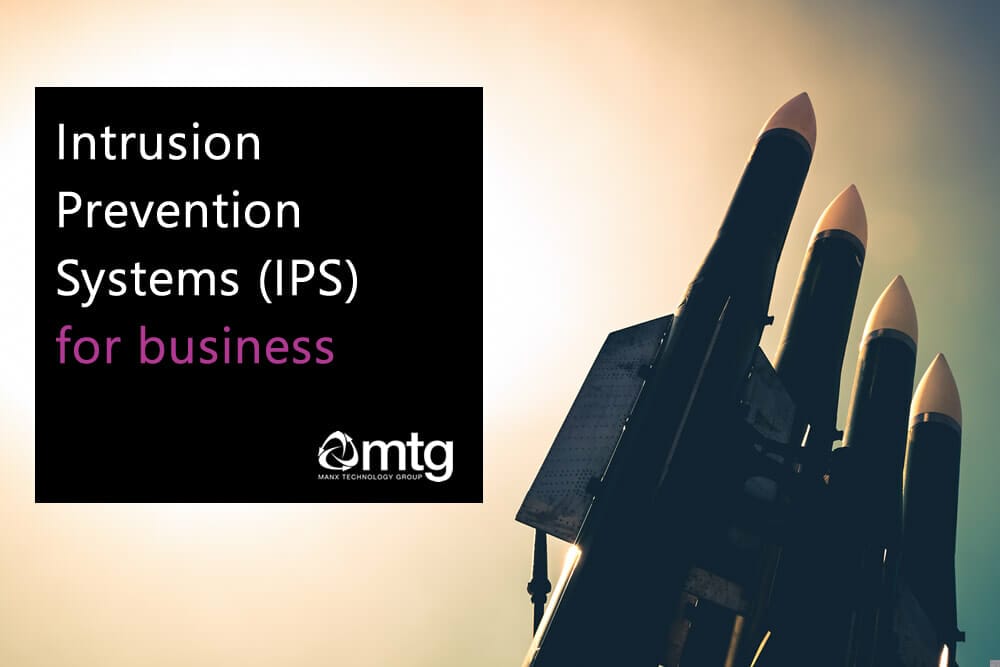Forest fires (wildfires) are common hazards in forests, particularly in remote or unmanaged areas. It is possible to detect forest fires, elevated CO2, and temperature levels using Internet of Things (IoT) sensors. You can deploy IoT, satellite and solar sensors in remote areas without the need for internet, cellular/mobile or mains power.
Impact of forest fires (wildfires)

The US Forest Service and other government agencies respond to an average of 73,000 wildfires each year, burning about 7 million acres of land and 2,600 structures. Given this ever-present threat, organisations are looking towards technology to enhance detection, provide real-time alerting, and improve response.
Detection of forest fires using CO2 sensors
When forest fires burn, they emit large volumes of carbon dioxide gas (CO2); you can use a network of IoT CO2 and temperature sensors for forest fire detection. IoT sensors can operate alongside satellite and optical detection systems or form a standalone network of sensors near key strategic assets.
Existing detection methods such as satellite and optical systems can cover large areas; satellite systems identify infrared signatures, while optical systems look for smoke plumes. Despite using these systems, CO2 and temperature IoT sensors can offer an inexpensive alternative to help detect forest fires.
The paper entitled A Review on Forest Fire Detection Techniques discussed the concept of CO2 sensors for forest fire detection.
We are looking for partners, universities, governments or authorities who wish to collaborate with MTG to develop and trial this technology. Contact us to learn more and see how we can work together.
Remote IoT sensor networks
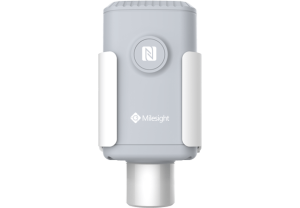
CO2 and temperature IoT sensors are battery and solar-powered, using a combination of LoRaWAN and satellite communications to provide coverage even in remote areas.
A LoRaWAN gateway can provide network coverage for up to 15KM outdoors, while satellite backhaul ensures traffic can be sent back to your monitoring system without requiring mobile or internet coverage.
Ease of deployment
The sensors associated with a CO2 detection network are easy to install, with low maintenance.
- LoRaWAN Satellite gateway is deployed, preferably in an elevated location.
- The gateway provides LoRaWAN coverage for up to 15KM or more outdoors, providing low-power wireless access to the network of sensors.
- CO2/Temperature sensors are deployed throughout the coverage area. CO2 levels can be monitored every 15 minutes (or less), along with temperature, battery status, etc.
- Upon receiving sensor data, the gateway transmits the data back via satellite (in an optimised manner) to a cloud platform or dashboard.
- Triggers and alerts can be configured.
Diagram of operation
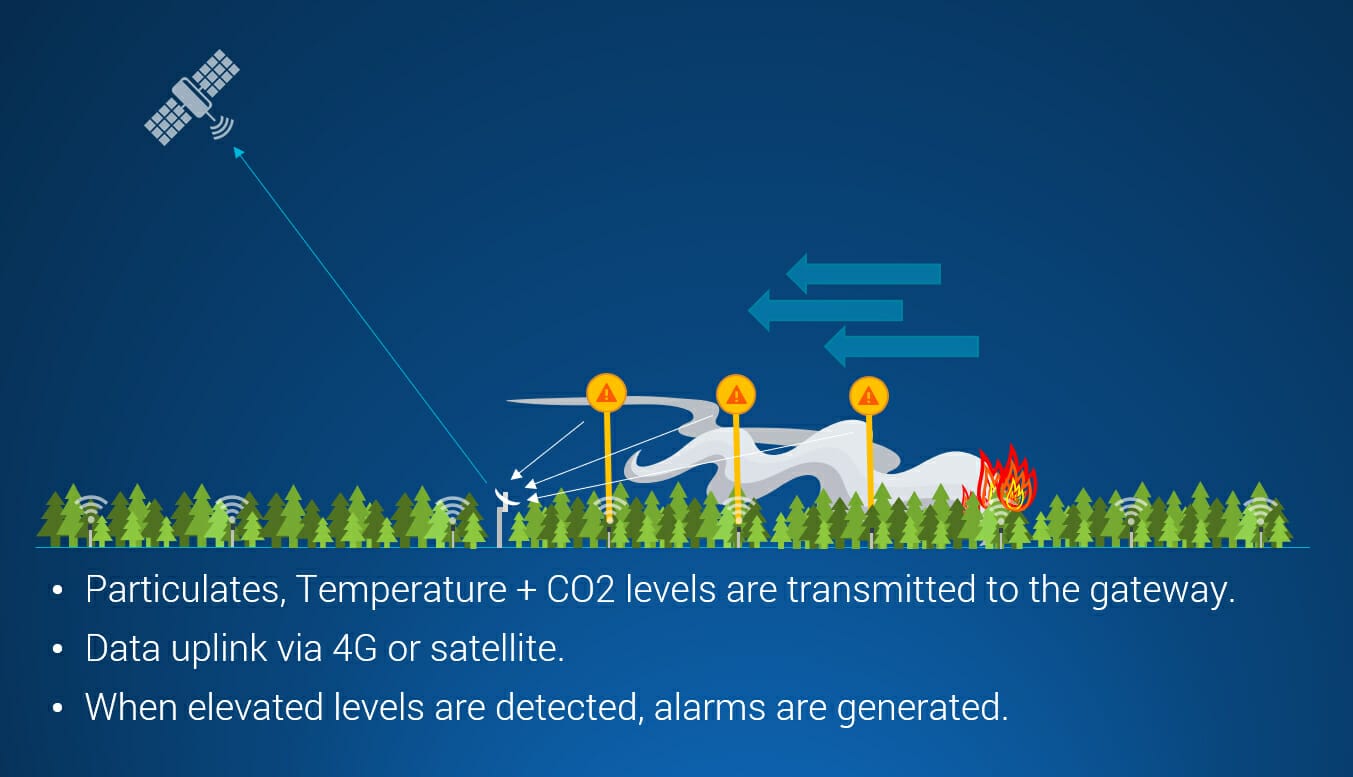
Outdoor CO2 Sensors for forest fire detection
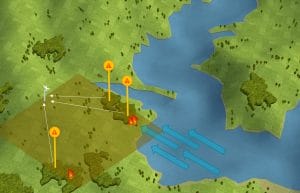
CO2 sensors from Milesight and Libelium can be used to detect elevated levels of CO2 gases.
- Milesight CO2 sensors run on battery, and they’re able to detect CO2 levels @ 400 – 5000 ppm (with 30ppm accuracy). The 19000mAh battery offers a battery life of up to 10 years (subject to sampling rate).
- Libelium Smart Environment Pro supports a CO2 sensor (alongside particulates and NOx gases). The SE-Pro has an integral 3000mAh battery and an auxiliary solar panel. The CO2 sensor has a nominal range of 0-5000ppm with an accuracy of 50ppm.
Both these LoRaWAN sensors can be coupled with a satellite LoRaWAN gateway for IoT coverage in remote areas.
Proof of concept and collaboration
We are looking for partners, universities, governments or authorities who wish to collaborate with MTG to develop and trial this technology. Contact us to learn more and see how we can work together.
Find out more
To find out more about CO2 sensors, forest fire detection, and deploying IoT sensors with satellite – speak to MTG today. We can advise on the technical aspects of the solution and provide pricing information in GBP, USD or EUR.
[sc name=”blogfooter” ]

